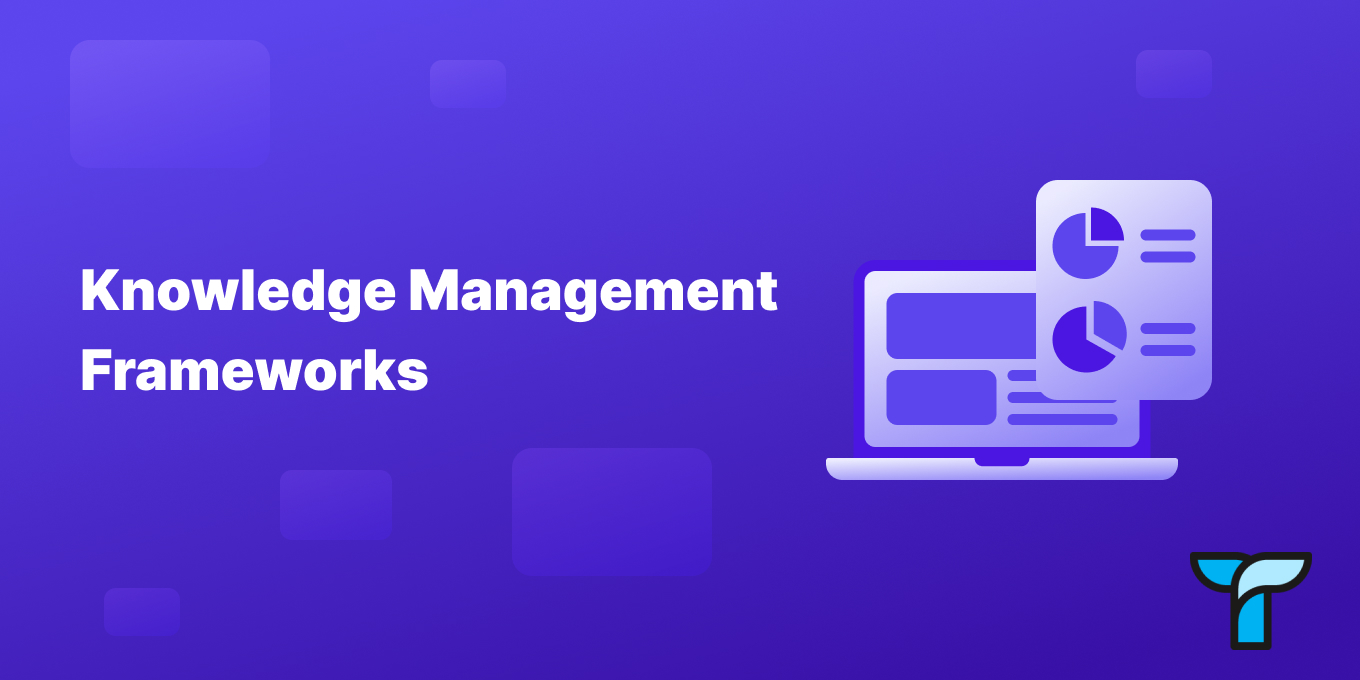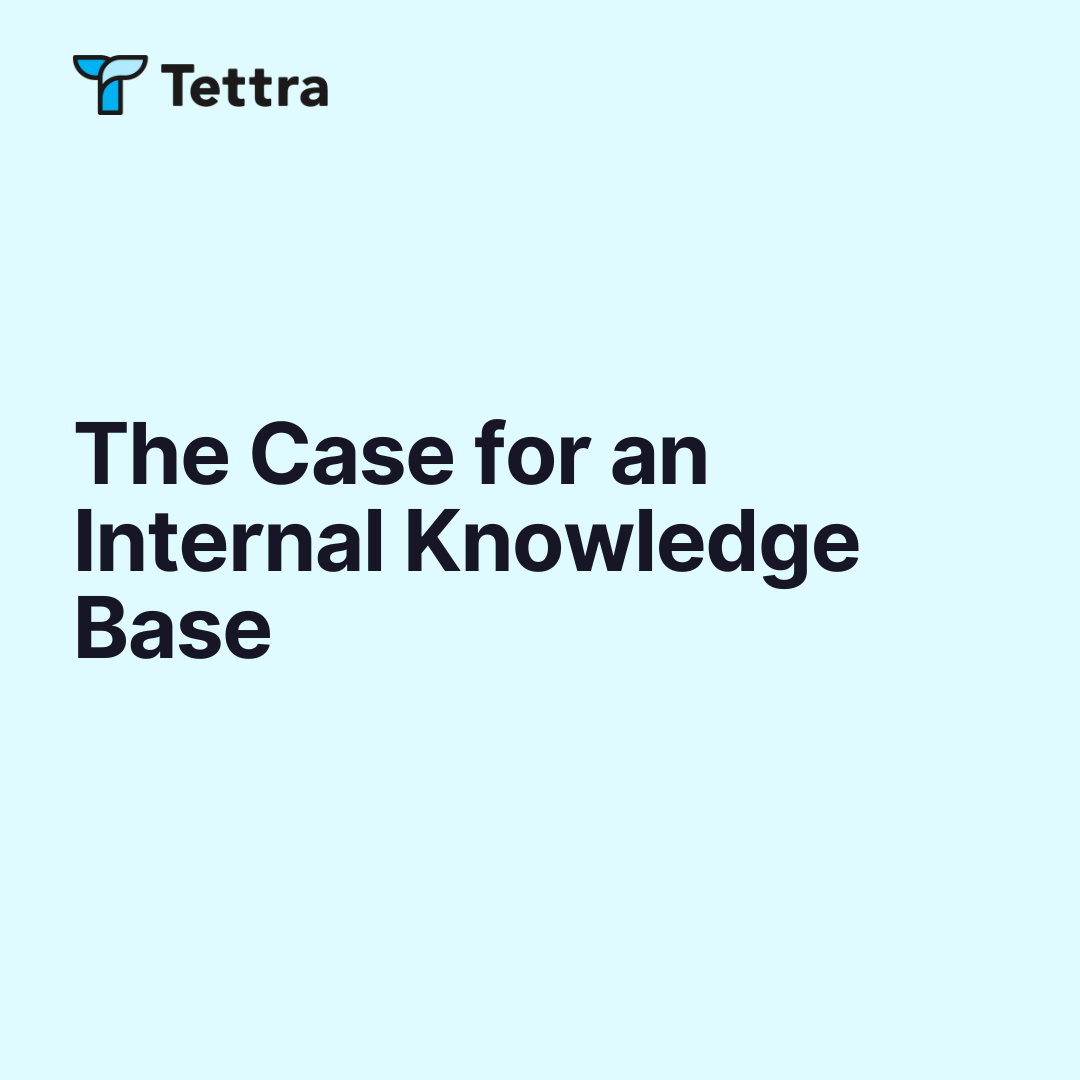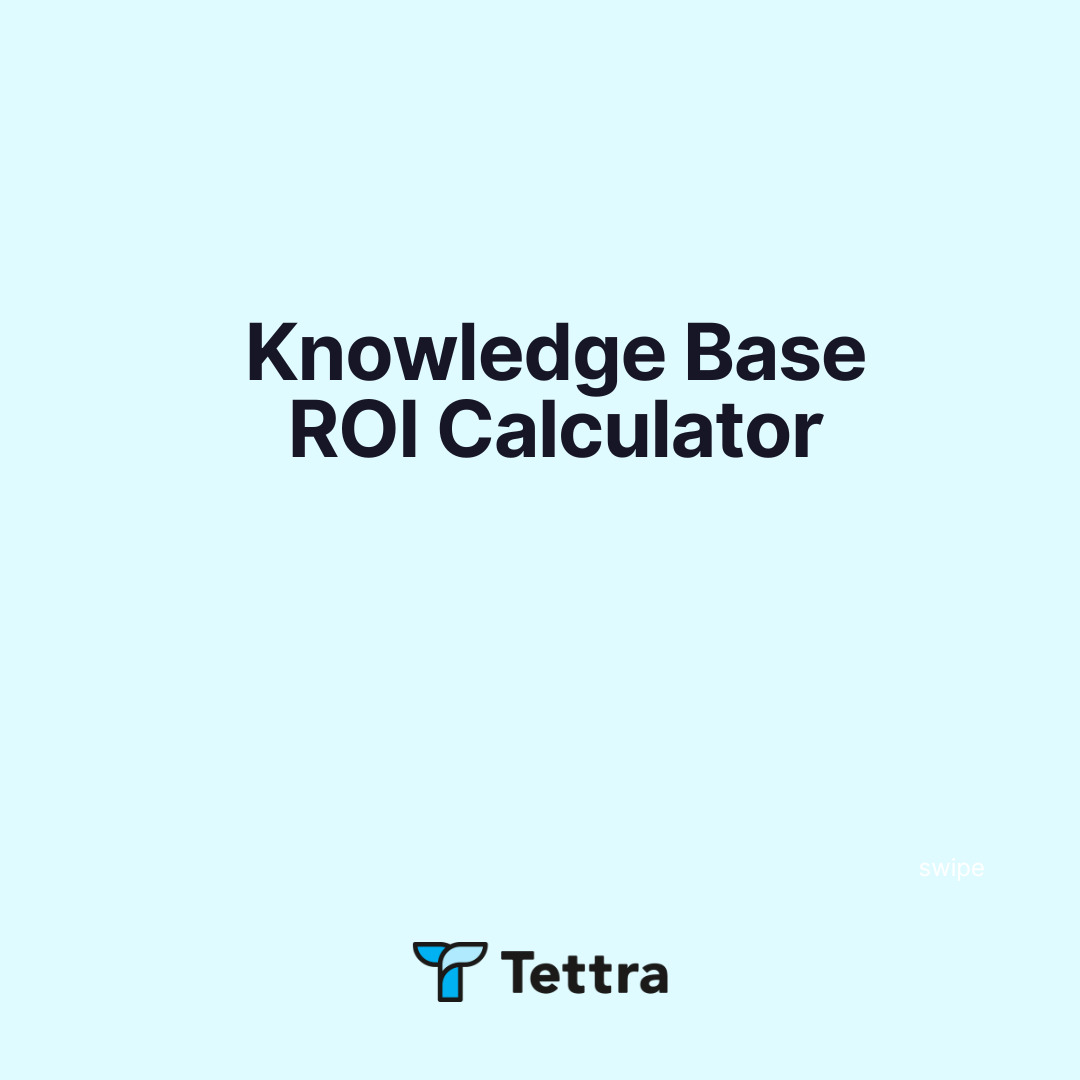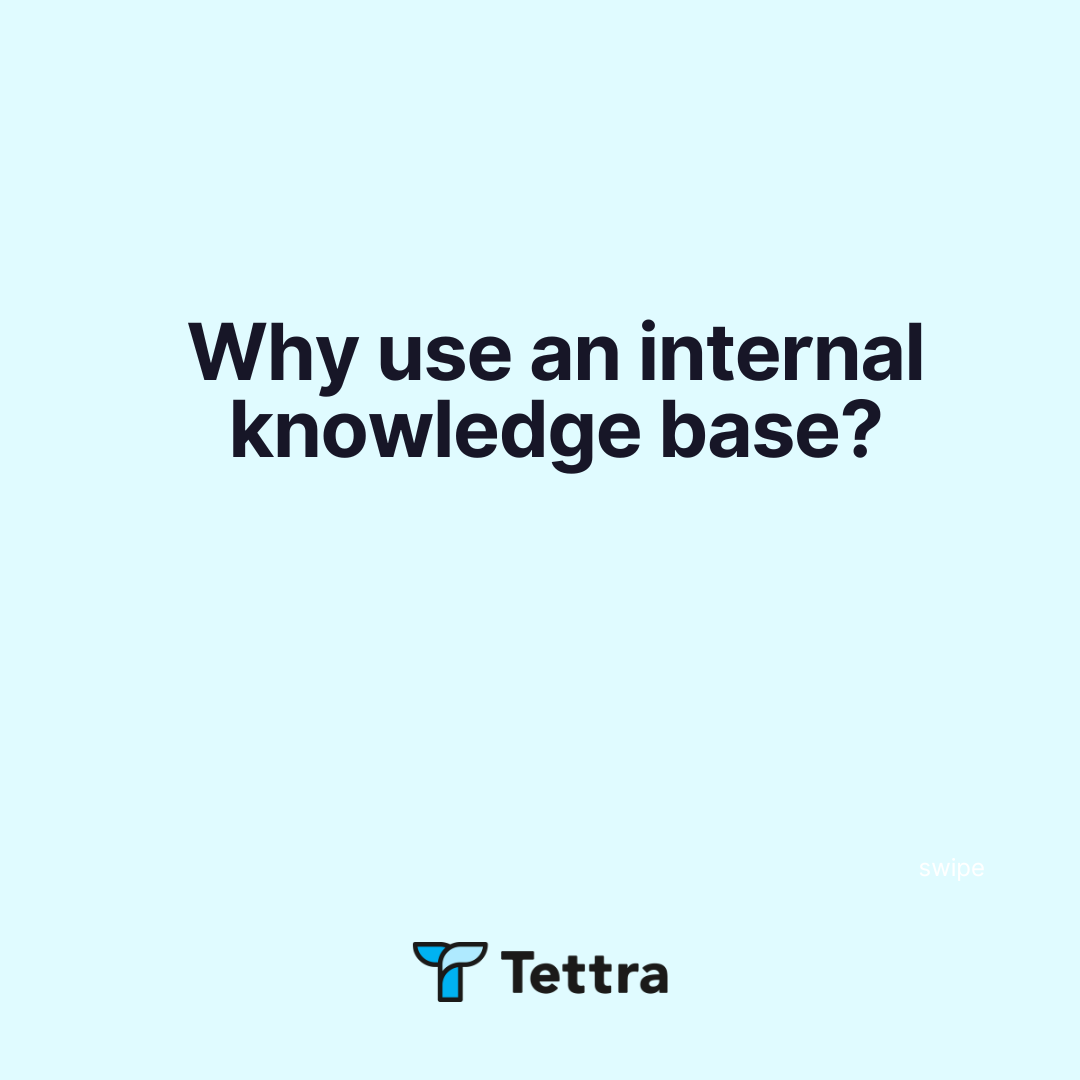Sir Francis Bacon is celebrated for his philosophical musings, so you may not be surprised to learn that the famous “knowledge itself is power” was one of his.
So profound were these words that they were later used by Thomas Jefferson, no less, at least four times in writing, and probably a party or two.
Although you could certainly call these men forward-thinkers, there’s quite a small chance they were talking about knowledge management frameworks in a business sense. Nevertheless, the basic idea still applies: knowing stuff puts you in a stronger position.
Organizational knowledge is indeed a mark of authority, which can give you a higher reputation and greater sway in your field. How you manage that knowledge, however, has a huge influence on the ultimate productivity of your workforce.
Let’s have a look at how knowledge management (KM) frameworks work, and what you should do to optimize yours.
⭐️ Get your free slide deck and calculate your cost savings.
What are Knowledge Management Frameworks?
Let’s first agree that a framework is an outline of steps to be taken. It’s then easier to then see that a knowledge management framework is the model an organization employs to structure all their disparate knowledge, so that it can be used, shared, and maximized fully.
At its most basic, such a framework includes:
- Recognizing Knowledge Needs: thinking about knowledge assets at your organization, and the ways they are actually used for your operation.
- Identifying Knowledge Resources: finding where your knowledge comes from, for instance individual skill and experience, project-driven information, procedural knowledge, internal processes, market research findings, customer feedback, and community knowledge.
- Gathering Disparate Knowledge: deciding on the best KM tools to collect scattered or siloed information, which includes actively asking employees about their routine processes and including everyone in the knowledge management process.
- Storing and Refining Knowledge: how knowledge is held, but also assessing what knowledge is actually worth keeping. Examples are centralized knowledge management tools, company wiki, learning management system (LMS), customer relationship management (CRM) system, and community forum.
- Retrieval and Distribution of Knowledge: how employees or customers can get the knowledge you’ve gathered. Examples are training programs, messaging apps (Slack), content management systems (CMS), webinars, intranets, and supporting software.
- With Tettra, you can retrieve answers via Kai, our AI-assistant. You can ask questions in plain language, and it provides an answer with a link to a reference page. Compare other top AI knowledge bases.
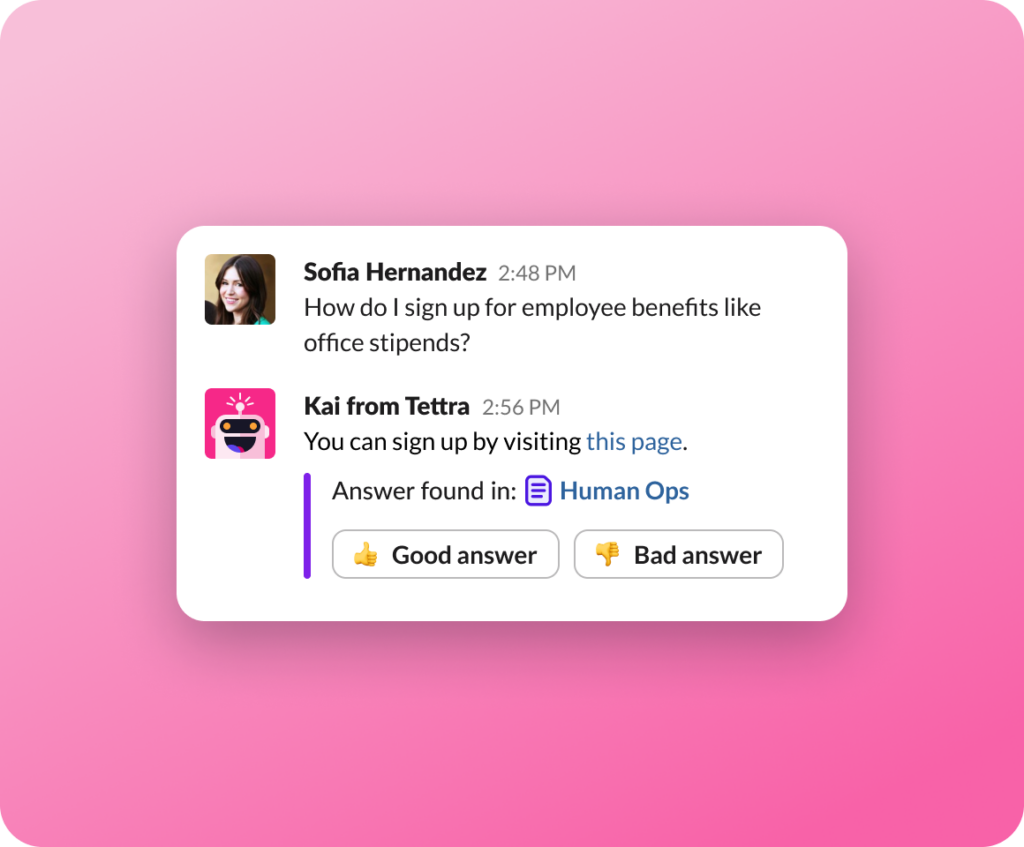
Information is everywhere and it never stops so knowledge management frameworks tend to get complicated fast.
Nevertheless, having an effective one in place is absolutely vital for the long-term growth of any organization, if only because they allow you to make proper use of internal knowledge.
Speeding up staff training, streamlining internal processes, eliminating redundancy, maximizing company resources, and finding better ways of doing things… all of these pursuits are helped with an effective knowledge management system and framework. So let’s learn exactly how to build one!
What Makes an Effective Knowledge Management Framework?
The core components of knowledge management are people, process, content, and strategy. These are the essential considerations when building your KM framework so it’s time to look at each one a little closer:
1. People
What’s the best way to ensure that your knowledge management framework is put to good use? Well, you need the right team leaders who are willing to champion the knowledge sharing process. A good place to start is heads of departments, especially HR, IT, marketing and customer service.
Having knowledge management advocates in senior positions is the first step towards a well-informed organization. After that, it’s important to assign other crucial KM responsibilities to the relevant employees. Who is responsible for updating explicit knowledge? Who is in charge of retaining the tacit (experiential) knowledge of long-term employees that move positions or resign? Who introduces new hires to your knowledge base?
Remember that the ultimate aim is to have and share knowledge. How organized the team responsible will directly correlate to the end quality. Without a clear understanding of the exact people behind your knowledge management framework, it will be near impossible to effectively do the work.
2. Process
Your knowledge management “framework”’ is exactly that, a model. It may be a little idealistic, or occasionally rest on convenient assumptions, and so you’ll need to translate that vision into internal processes.
Employees need to visibly see how their day-to-day responsibilities relate to the knowledge sharing process.
A company needs to first look at how their information flows. Identify information sources and track them on their journey through current routines, team communications, and shared platforms. You then get a better understanding of what information is available, as well as who creates, uses and updates it.
Going with a knowledge base that has inbuilt permissions makes it much easier to manage information across an entire organization. You avoid information overload by ensuring individuals have access to the knowledge most relevant to their work.
3. Content (and Technology)
Once you are aware of where your information comes from, it’s time to decide on a place to keep everything. “Content” in this sense is your documented knowledge, and you’ll certainly want to hold all of your knowledge in a centralized location.
It’s not always obvious which tech solution is best for your knowledge management framework. As a general starting-off point, look for providers that check these boxes:
- Knowledge management software is user-friendly: managing organizational knowledge is a continuous process. It’s crucial that any subject matter expert (SME) can create content, and employees can easily find it, without specialized tech skills. Your workforce is unlikely to accept software that is difficult to use.
- Knowledge is organized appropriately: there are many ways to arrange information, but the best examples are by activity (categories relate to specific actions/areas of work), user (employees are presented information unique to their position) and format (information of the same kind is grouped, e.g. how-to guides).
- Knowledge tools synchronize: if you use multiple platforms that operate poorly with one another, you’ll be severely limiting the effectiveness of your knowledge management framework. This cannot be overstated because the fewer chances information has to slip away, the larger the pool of knowledge your organization has to draw from.
The best tech solutions cover the entire knowledge sharing process. This includes offering integrations so that team communications and documents can be routed straight to the platform. Another thing to look for is a request feature, which allows employees to actively seek answers/updates by going straight to SMEs.
4. Knowledge Management Strategy
Effective knowledge management framework relies on strategy, essentially the reason behind the effort. For your organization’s strategy, first ask whether you’re solving a specific problem or making general improvements. Either way, it’s important to have means of measuring results to determine success.
Say you want to save employee time or streamline the onboarding process. You set up a corporate wiki to direct people towards those pesky repeat questions.
It would then make sense to look at the wiki pageviews and examine them against activity in messaging apps like Slack. If you see an increase in wiki activity and fewer questions asked, you know your strategy has been successful.
Take the example of Techstars, whose knowledge was “spread out across a lot of different tools,” making it difficult for their employees to find updated and verified information.
Their solution was an internal knowledge base, which helped them “reduce the amount of time people spend answering questions” by empowering people to “find the answers themselves.”
The Knowledge Management Workflow
Here’s how an effective knowledge management framework works in practise:
1. ASK the Question: Information is needed. An individual asks the question in chat, or creates a request directly in a web app. Requests can be categorized by what the individual needs, such as reviewing a draft, updating information, or creating entirely new pages.
2. ANSWER with the Knowledge Base: The individual searches for the answer in a centralized location. If the knowledge is already documented, they get their answer. Team leaders encourage this proactive approach for the learning process.
3. ASSIGN to Relevant SME: If the answer doesn’t currently exist anywhere, the question is directed to the most relevant SME. They document the knowledge by making a new submission on the company wiki, or revising an existing document to incorporate the new question.
4. APPRECIATE the Response: The individual is thankful for the answer. They may send a quick thanks or leave a comment to show the answer has real value. Team leaders encourage individuals to give feedback on the knowledge sharing process to further strengthen the knowledge management framework.
Choosing the Best Software for Knowledge Management
The software that you use to manage your knowledge has a huge impact of the ultimate effectiveness of your framework. It’s not enough to simply have the software… you need the tools that are best suited to your organization.
As before, the first steps of the KM framework are recognis]zing knowledge needs and identifying knowledge resources. How you use knowledge and where it comes from give you a good indication of your basic knowledge requirements. Once you know that, you can start looking at software.
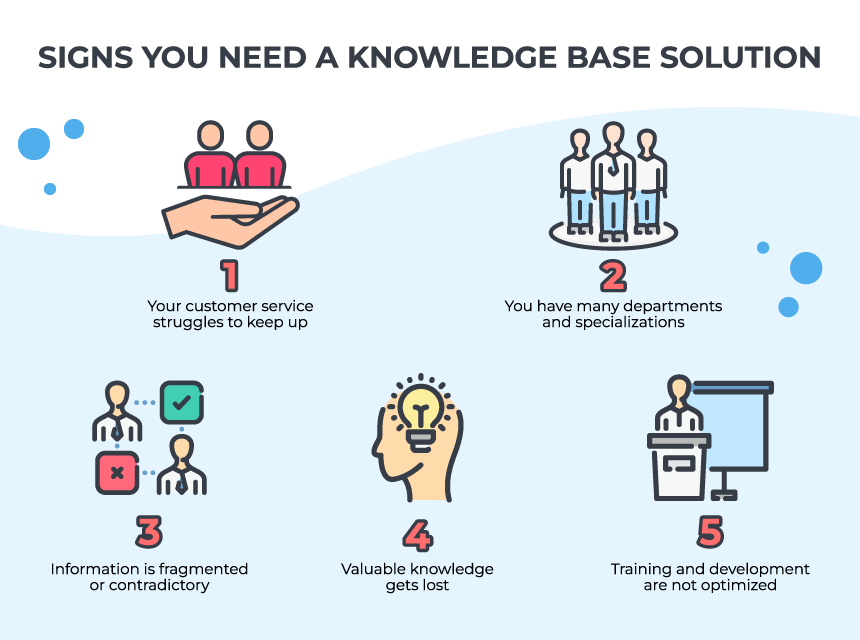
How to choose the best knowledge base software is an article of its own (hint, hint!), but here are some must-haves to consider:
- Advanced Search: you should be able to search by activity, category, format, etc. The knowledge base should ideally support deep searches, and make use of detailed search parameters to offer the most accurate and relevant information.
- Convenient Authoring: document templates are available to speed up content creation. It’s easy for contributors to submit/edit work, highlight changes, update permissions, and switch between document versions.
- App Integrations: Where possible, your knowledge base should be compatible with any specific software you depend on. Examples include G-suite, and Slack.
- Feedback Functions: users can conveniently request updates or edits to documents. They are able to leave comments on pages and (preferably) submit suggestions in specific places, too. Employees are encouraged to be part of the knowledge sharing process.
- User-friendly Design: the interface is clean, simple and easy-to-use. Functionality precedes flashiness. Features have a clear use and anything unnecessary is eliminated. The average employee should be able to navigate around confidently without specialized tech skills.
It would be a shame to invest so much time in a knowledge management framework only to be let down by software. Take your time when comparing knowledge bases and find one that doesn’t just have the features you need, but also fits well with your company culture.
Gain Insights, Use that Knowledge
A problem shared is a problem halved, the old saying goes. If that’s the case, knowledge shared is at least doubled. Having an effective knowledge management framework gives an organization the opportunity to gain insight they couldn’t reach, use knowledge they didn’t know they had, and solve problems that seemed impossible.
It’s so much more than just passing information. It’s about empowering people to enjoy their work, spend their time well, and take part in the knowledge sharing process. It’s about pooling skills, experience, methodologies, observations, and opinions all so that people can do better. That’s the true power of a knowledge management framework, and that’s why leading organizations take the time to get them right.
Get more tips about knowledge management from Tettra
- What is knowledge management? The basics explained
- What is knowledge management software? (20 things to know)
- 8 examples of knowledge management systems
- 5 steps of the knowledge management process
- Here’s your knowledge management strategy
- 11 best knowledge management tools to use right now
Use Tettra for Knowledge Management
Tettra is the best knowledge management tool in 2023. As a cloud-based software, it has a simple, user-friendly UI and integrates with Slack, Google Drive, and more. It also has a powerful context-driven search feature that lets you find any information in seconds.
One of Tettra’s standout features is its AI-powered knowledge base that uses machine learning algorithms to recognize and tag information accurately. It keeps the knowledge base organized and up-to-date and helps users quickly find the necessary information.
The best part? Tettra has built-in analytics and reporting features that simplify monitoring user activity and determining where to make adjustments.
Tettra offers a full suite of tools for sharing knowledge. With Tettra, you’ll get:
- Q&A workflow to capture questions
- Knowledge base to document answers
- Knowledge management features to keep content up to date.
- Integrations with chat tools to make sure your team actually uses Tettra

